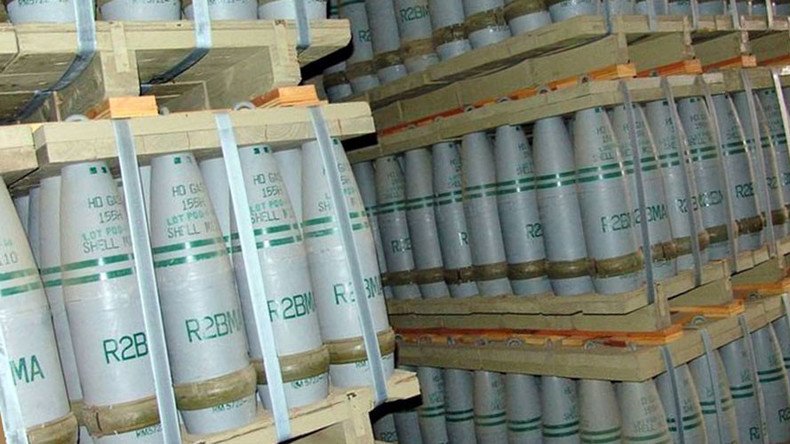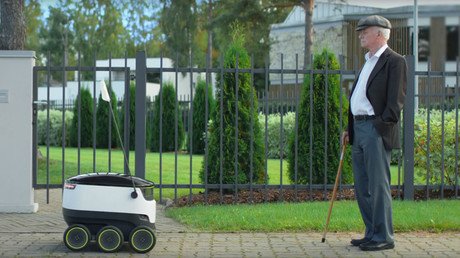Robots aid Army in destruction of mustard-gas stockpile

US Army robots are set to destroy 78,000 mustard-gas artillery shells in a specially made $4.5 billion plant in Colorado. The move is to comply with an international treaty that bans chemical weapons.
Robots at the largely automated planet at the military’s Pueblo Chemical Depot in Pueblo, Colorado, are scheduled to begin destroying the weapons next week, according to the Associated Press.
The deadly chemical weapon was widely used during WW1. Once dispersed in the air, the mustard gas acts like a mist and melts any flesh it encounters.
Robocop lives: AI security guard drone flies low, fast and recharges https://t.co/oWyULH9WUGpic.twitter.com/s7TFJba11R
— RT America (@RT_America) August 23, 2016
The robotic equipment will dismantle the shells, and then water and bacteria will neutralize the chemical agent into biosludge. The biosludge will be secured in containers for disposal at an off-site facility. The water will be recovered for reuse in the process.
The metal parts from the shells will be heated to 1,000 degrees Fahrenheit for 15 minutes and then recycled.
When the plant is at full operating capacity, it should be able to destroy, on average, 500 shells a day, with the project slated to finish in mid-2020. The plant will then be dismantled, according to the US Army.
“The process for destroying the Pueblo munitions is a combination of neutralization and biotreatment,” said the Army.
The full cache of shells contains 2,600 tons of mustard-gas.
“We’ve practiced a lot,” Greg Mohrman, site manager for the plant told the AP. “Next week it gets real.”
The Pueblo Chemical depot has already destroyed mustard-gas shells that had leaks or were unsuitable for processing in the new plant. Those were destroyed in a sealed chamber using explosives and neutralized with chemicals.
The US has a total 30,600 tons of mustard and nerve agents, which it said it never used in the wars. Ninety percent has been destroyed by incineration.
The Army also stores an additional 523 tons of mustard and deadly nerve agents at the Blue Grass Army Depot in Richmond, Kentucky. The depot expects to begin destroy its supply next year, with an anticipated finish date of 2023.
The chemical weapon, mustard-gas, after its first widespread use during World War I, was eventually prohibited under the Geneva Protocol in the late 1920s, but those rules failed to address production or stockpiling. The chemical weapon was used during World War II by Italy against Ethiopia, Japan against China, and with the US and Russia maintaining stockpiles during the war but never using.
“Only a few countries used chemical weapons at all after World War II: Egypt against Yemen in the 1960s, and Iraq’s dictator Saddam Hussein, in the 1980s,” according to Popular Science.
It wasn’t until the Chemical Weapons Convention was signed in the 1990s that production and stockpiling was outlawed.
In 2013, Syria is alleged to have used chemical weapons against its civilians, although investigations were unable to confirm reports definitively. A deal was brokered to destroy Syria’s cache in 2014.













